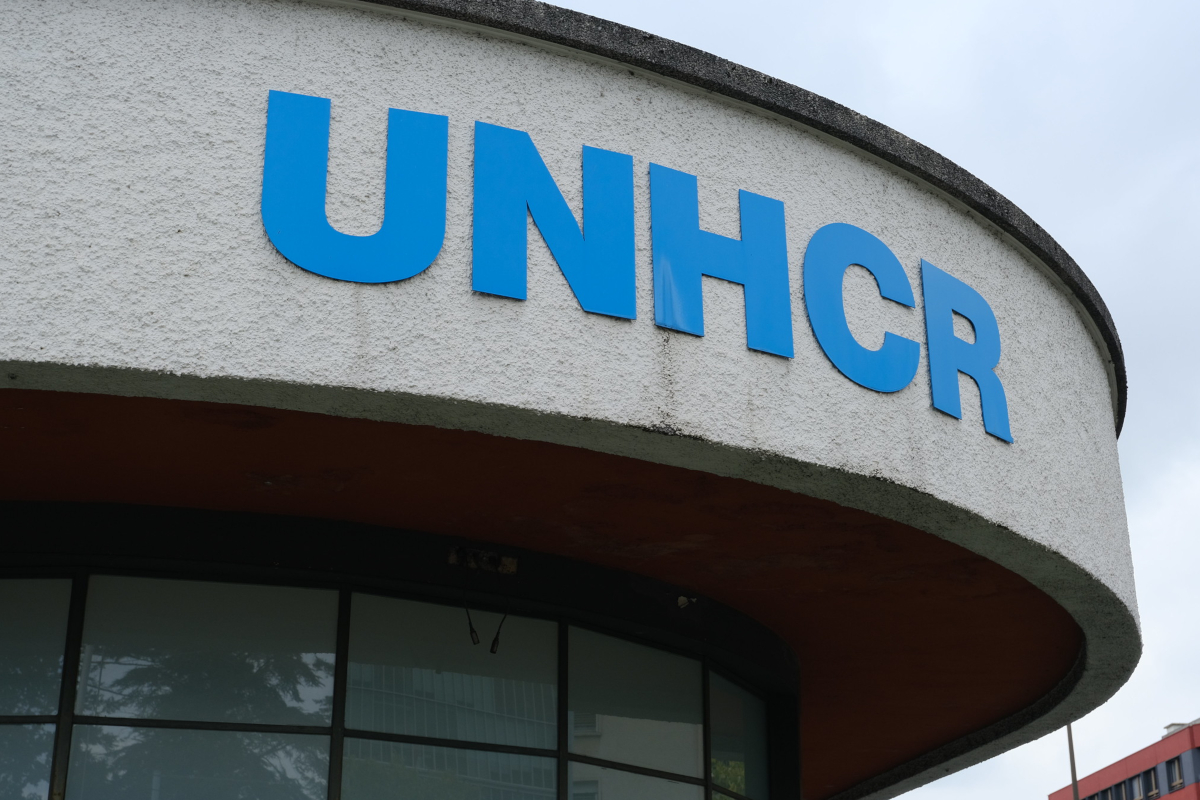UN migration data kept from the public but delivered to EU border externalisation body
Topic
Country/Region
02 March 2023
In January, representatives of the International Organization for Migration (IOM) and UN refugee agency (UNHCR) gave presentations to a new EU body launched last year to propel the externalisation of migration policies. The presentations included multiple facts and figures that are no longer made public, and the UNHCR called for the UNHCR and EU member states to align their communications strategies, “without concealing challenges.”
Support our work: become a Friend of Statewatch from as little as £1/€1 per month.

Image: Guilhem Vellut, CC BY 2.0
Yasha Maccanico, Statewatch Researcher, comments:
“It is extraordinary that data that used to be made available by UN bodies to the public about matters with very serious human rights and humanitarian implications is now withheld, whilst IOM and UNHCR share that information with the EU’s MOCADEM mechanism.
“MOCADEM is a means for the EU and its states to collectively pressure so-called third states into implementing its migration management and border control policies, including through punitive measures and enticements. This brings the neutrality of UN bodies into question. More worrying still, it is a concern for UNHCR to be cooperating with EU strategies to limit both refugees’ possibilities to flee through muscular, intransigent and hi-tech border enforcement and the geographical availability of access to asylum through plans to externalise it further, which appear to follow goals opposite to the UN agency’s mission.”
Presentations to MOCADEM
The UNHCR presentation – which appears to have been given by Vincent Cochetel, the UNHCR’s special envoy for the Western and Central Mediterranean – in part aims at informing EU government officials about the situation for refugees in Libya, and gives some attention to “solutions for refugees.”
The presentations (pdf) were given to the Council’s MOCADEM structure (Mécanisme opérationnel de coordination des actions pour la dimension externe des migrations), which was put in place last year by the French Presidency of the Council.
The UNHCR presentation gives significant attention to providing intelligence on past and future (likely) movements of people towards Libya and onwards to the EU, as well as calling for an increase in repressive measures – for example through new action against smuggling and trafficking.
Given the UNHCR’s primary purpose - “to ensure that everybody has the right to seek asylum and find safe refuge, having fled violence, persecution, war or disaster at home” – the content of the presentation may raise some eyebrows.
Of all the tasks ascribed to the UNHCR, only “the execution of any measures calculated to improve the situation of refugees and to reduce the number requiring protection,” could be considered to encompass calls for crackdowns on smuggling and trafficking, although those calls come in the context of proposals for the “prevention of dangerous journeys” rather than the protection of refugees per se.
Information blackout
The IOM presentation sticks to facts and figures, although one expert who has monitored the situation for Mediterranean for years says both documents include information that used to be made public, but that no longer is.
Sergio Scandura, a journalist with Radio Radicale, told Statewatch that UNCHR “used to be collaborative and also had a person responsible for communications in Italian ports of arrival who answered journalists,” but there is no longer anyone working in that role as far as arrivals in Italy are concerned.
Furthermore, said Scandura, “about a year and a half ago, IOM/UNHCR Libya stopped showing photographs of arrivals in Tripoli... they disappeared, the posts from their social media accounts that documented returns to Tripoli used to be almost daily; there is only the IOM Libya account, which occasionally posts statistical data, numbers and little maps and graphs."
Scandura is of the opinion that information is being withheld from the public because “otherwise UNHCR would lose their accreditations from the interior ministry to operate in ports, so the prefectures would cause them trouble. Pretty much all the international humanitarian organisations accredited in disembarkation ports are ’omertose’ [acting according to a code of silence]... in fact, we ask them for information and they don't give us any. They say they can't tell us... because the Viminale [interior ministry] has clearly said that nothing must be said, we mustn't know if, how many, when and where people arrive in what port, how many people arrive in Lampedusa; every time, it is always like this."
Numbers and nationalities
The first half of the presentation looks at data on migration to and from Libya, going through departures and disembarkations and noting that the likelihood of successfully crossing the Mediterranean varies widely depending on the nationality of the individual in question, which in turn influences the “protection you can afford.”
One slide notes: “Significant increase of large group departures from Eastern Libya on fishing boats in 2nd half of 2022,” noting the most prominent nationalities and departure points; the “Top 10” nationalities disembarked in Libya and arriving in Italy are also compared.
A slide on “Interceptions/rescue at sea by the Libya ‘authorities’ in 2022” notes the ongoing failures of the Tripoli Maritime Rescue Coordination Centre (MRCC), which has “unpredictable availability on the phone” and “cannot predictably mobilize some of the Libyan actors involved in search and rescue” (SAR).
Nevertheless, almost 25,000 people were disembarked in 263 SAR incidents in 2022, and with no humanitarian organisation present for almost half of those disembarkations. In an estimated 80% of those cases, “access issues” restricted humanitarian organisations attending, while in the remaining cases they simply were not informed of the disembarkation.
Brutal failings in post-disembarkation procedures are highlighted. The presentation notes that this will not be resolved by training or capacity-building activities, and that “Libyan entities involved in SAR are likely to remain reluctant to any form of monitoring. No changes to be expected in 2023.”
The presentation also offers a prediction of departures in 2023, estimated at between 70,000 and 80,000 “without instrumentalization by any actor of the irregular departures.” Even if the political situation in Libya were to improve, however, this “will not translate in less irregular movements.”
An increase in “partially regular movements” of Syrian, Palestinian and Bangladeshi nationals arriving at Benina airport in the east is noted, with the presentation suggesting complicity by Libyan armed forces members seeking to enrich themselves, and to press EU states to provide training and technical assistance as happens in the west of the country.
The issue of collective expulsions from Libya is also highlighted, with the presentation referring to 14,563 documented “abitrary” expulsions which have “led to loss of life in the desert.” The possibility of the EU Border Assistance Mission (EUBAM) Libya aiding with “migration management” at land and airport borders is raised, as well as “safe and orderly readmission” being promoted by the African Union-EU-UN task force.
“Less talk, more action”
At this point, the presentation turns towards measures to stop people arriving in Libya in the first place.
It calls on EU states to encourage crackdowns on smuggling and trafficking in “key transit, origin countries along the routes to Libya” and by the Libyan “authorities”.
It goes on to question whether “data from FRONTEX debriefings in Italy [is] shared with relevant countries in Africa,” because “Data retention limits by EU agencies leads to loss of intelligence.”
The presentation calls for joint investigations with Libyan authorities “with adequate safeguards” and for member states to increase the use of sanctions against alleged traffickers and smugglers: “Use of EU/UN sanctions regime remains very limited (only 7 individuals, with little result thus far, many known traffickers are not listed, why?”)
There should also be “better use of the ROCK [the Regional Operations Centre in support of the Khartoum Process] and of a route-based approach,” for which the data on the nationalities arriving in Libya provided elsewhere in the presentation would no doubt be useful.
At the same time as calling for action that would likely lead to more people being detained, the presentation notes: “Conditions in [detention centres] remain in general unchanged from sub-standard to appalling,” and: “No progress on alternatives to detention.” There are some 6,500 people locked up in 16 different centres across the country, while others “exist under SSA, MoJ, militia control”.
The SSA is presumably the Stability Support Authority, which Amnesty International described as a state-funded militia in May 2022, and which does not allow access to centres it controls.
Solutions for refugees?
The presentation laments a decrease in resettlement opportunities that has hampered evacuation efforts.
In the case of Libya, 30 resettlement pledges have been made by one EU member state and 200 by non-EU states; for Niger, 375 places have been pledged by three member states and 100 by non-EU states; and for Rwanda, 170 from two member states and 300 from non-EU states. The time period is not specified. In the case of Rwanda and Niger, there are “Emergency Transfer Mechanisms” (ETMs) in place for both countries.
The presentation also note that there are “no labour migration programmes are open to refugees,” and only one country (Italy) operates a humanitarian corridor scheme.
The fact of the matter is there are not that many “solutions for refugees” available in Libya, and not that many offered by the EU and its member states.
In Libya itself, the presentation says regularisation cannot be negotiated for some refugees and many are excluded from support by discriminatory restrictions on registration for Ethiopians, Eritreans, Iraqis, Palestinians, Somalis, South Sudanese, Sudanese, Syrian and Yemen nationals, but some nationalities can stay continuously.
It notes that there are around 44,724 refugees (35% women), most refugees (and migrants) are employed irregularly, Arab refugees enjoy better employment conditions, and cash assistance is unavailable for most refugees because they lack the required documentation for banking services.
It calls on member state officials to:
“...encourage a debate with the Libyan authorities on a possible regularization measure to gradually authorize the stay and decriminalization the situation [sic] of some foreigners that Libya needs/employs, those with Libyan spouses/children, those residing for several years with no criminal records.”
It also calls on them to provide “advice to the Libyan authorities to develop non-discriminatory, enforceable, harmonized, and monitorable legal and policy frameworks to promote rule of law,” demand a “gradual end of detention for children and women in 2023,” and help establish “an individual judicial review mechanism for migrants and refugees in detention.”
Difficult options
The paper underscores that there are no easy options in Libya, and emphasis on two occasions that there are no quick fixes: “the holding of elections will not change anything for migrants and refugees”.
It also raises concerns about an increase in “reputational risks in an already challenging ‘ecosystem’,” including: “Stronger criticisms by NGOs and refugee/migrant-led organizations for what we do and what we do not do.”
Part of the response to this, the UNHCR representative told EU member state officials, should be “better alignment of our respective communication strategies without concealing challenges”.
Documentation
- MOCADEM Round Table - presentations (Council doc. WK 536/2023 INIT, LIMITE, 13 January 2023, pdf)
Our work is only possible with your support.
Become a Friend of Statewatch from as little as £1/€1 per month.
Further reading

Migration policy overspill: access to information in peril
It is well-documented that the externalisation of migration and border policies by the EU and other western states has led to appalling violations of human rights. While this is by far the most important issue resulting from border externalisation, there are also many other negative effects - including attacks on the right to access and impart information.

Italy: Migration, borders and freedom of information: decree aims to “nullify any glimmer of transparency”
The decree, approved quietly in March, provides a blueprint for official opacity – vast swathes of documents are now deemed “inaccessible”.
Spotted an error? If you've spotted a problem with this page, just click once to let us know.
